The College Board offers the most realistic digital SAT practice because they design both the practice tests and the actual exam.
Here’s why using the College Board’s resources is a good idea:
- Accuracy: The questions are similar to what you’ll see on the actual test.
- Format: You’ll get a feel for the digital testing environment.
- Answers and explanations: They provide answer keys and explanations for all the questions.
While other websites might offer downloadable PDFs of practice tests, they may not be as up-to-date or reflect the current digital format of the SAT.
Digital SAT Sample Paper [PDF]
| Sample Paper | Question Paper | Solution |
| Digital SAT Sample Paper 1 | Question | Solution |
| Digital SAT Sample Paper 2 | Question | Solution |
| Digital SAT Sample Paper 3 | Question | Solution |
| Digital SAT Sample Paper 4 | Question | Solution |
| Digital SAT Sample Paper 5 | Question | Solution |
| Digital SAT Sample Paper 6 | Question | Solution |
| Digital SAT Sample Paper 7 | Question | Solution |
| Digital SAT Sample Paper 8 | Question | Solution |
Students who prepare for the SAT exam ahead of time often find the test to be easier. However, some students may find the SAT papers challenging because of factors like time limits, unfamiliar topics, and slow passage reading. Compared to some other exams, the SAT question paper is simpler because it follows predictable patterns, doesn’t require memorization, and consists mainly of multiple-choice questions. Gathering previous year’s SAT papers can be beneficial for candidates as it helps them understand the exam pattern and prepare better for the SAT.
DOWNLOAD DIGITAL SAT STUDY MATERIAL !
Mathematics Topics:
| Mathematics Topics | Download | Online Practice |
| Algebra | Download | Practice Now |
| Problem-Solving And Data- Analysis | Download | Practice Now |
| Advanced Math | Download | Practice Now |
English Topics:
| English Topics | Download | Online Practice |
| Expression Of Ideas | Download | Practice Now |
| Standard English Convention | Download | Practice Now |
The SAT Gets a Digital Makeover: Faster, Easier, and More Modern
| Feature | Digital SAT (March 2024–Present) | Old Paper SAT (Before March 2024) |
| Delivery | Computer- or tablet-based | Paper and pencil |
| Test Length | 2 hours, 15 minutes | 3 hours, 15 minutes |
| Sections | 2: Reading & Writing, Math | 3: Reading, Writing, Language, and Math |
| Scoring | Same 400–1600 point scale | Same 400–1600 point scale |
| Adaptive Testing | Yes, difficulty adjusts based on performance | No, fixed difficulty |
| Calculators | Allowed throughout Math section (built-in or approved personal) | Not allowed in all Math sections |
| Score Reporting | Results are available within days | Results will be available in 5 weeks |
Digital SAT Test Dates:
| SAT Test Date | Registration Deadline | Late Registration & Testing Changes Deadline |
| March 8, 2025 | February 21, 2025 | February 25, 2025 |
| May 3, 2025 | April 18, 2025 | April 22, 2025 |
| June 7, 2025 | May 22, 2025 | May 27, 2025 |
| August 23, 2025 | To Be Announced | To Be Announced |
| September 13, 2025 | To Be Announced | To Be Announced |
| October 4, 2025 | To Be Announced | To Be Announced |
| November 8, 2025 | To Be Announced | To Be Announced |
| December 6, 2025 | To Be Announced | To Be Announced |
Digital SAT Exam Pattern:
The Digital SAT Exam is divided into two sections: Reading and Writing and Math. Each portion contains a specific number of questions and a time limit, and each section must be finished within the time limit. To learn more about the Digital SAT Exam Pattern.
Reading & Writing Section Structure:
The Reading and Writing part has two sections. Each section has 25 questions you need to answer, along with 2 practice questions. You have a total of 32 minutes for each section. Check the table below for more details on the exam structure:
|
DIGITAL SAT EXAM STRUCTURE |
|
|
Section |
Reading and Writing |
|
Test length |
Module 1: 25 operational questions and 2 pretest questions Module 2: 25 operational questions and 2 pretest questions |
|
Time per module |
Module 1: 32 minutes and Module 2: 32 minutes |
|
Number of questions |
54 questions |
|
Total time |
64 minutes |
Math Section Structure:
The Math part has two sections. Each section has 23 regular questions and 2 practice questions. You get a total of 70 minutes for Math, split evenly between the two sections. In the Digital SAT, the calculator is available throughout the exam. The table below has more details about the exam structure:
|
DIGITAL SAT EXAM STRUCTURE |
|
|
Section |
Mathematics |
|
Test length |
Module 1: 20 operational questions and 2 pretest questions Module 2: 20 operational questions and 2 pretest questions |
|
Time per module |
Module 1: 35 minutes and Module 2: 35 minutes |
|
Number of questions |
44 questions |
|
Total time |
70 minutes |
Download The Digital SAT English and Math Sample Papers
English Paper Screenshot
Math Paper Screenshot
Download Digital SAT Sample Paper
How to Download Bluebook Application through College Board Site:
To take the tests, you must download the College Board Bluebook app. Here are the Steps to download the Bluebook application.
Step 1. Open the College Board Site.
Step 2. Download the Bluebook application.
Step 3. Register yourself on the College Board Site.
Step 4. Start solving the Sample Papers.
Advantages of Full-Length Digital SAT Practice Exams
- Taking full-length Digital SAT practice tests is one of the most effective ways to prepare for test day.
- You will practice answering questions similar to those you will encounter on test day.
- You develop the patience to sit through a 2-hour test.
- Test review allows you to assess your own performance and organize your preparation further based on your weaknesses.
- You learn how to manage your time and pace by taking proctored practice exams. You practice answering the questions in the allotted time by going through the problems.
- Proctored practice exams also boost your confidence in taking the real thing.
Digital SAT eBook:
It is very important to know minor to major facts when starting your preparation for an aptitude-based exam like the SAT, with updates that can help with your Digital SAT preparation.
We are pleased to announce the release of TestprepKart’s free Digital SAT study guide for the new SAT. This free Digital SATebook gives you everything you need to know about the test, from content to content mastery, among the top practice goals you need.
Sample Papers Related FAQs
Q. Why you should not download practice papers from random websites?
A: Because sample papers from any random website might not be authentic or the latest. So, it is always recommended to go for trusted websites or the official website.
Q. What is a good Digital SAT score?
A: On average, anything above 1200 is considered to be a good score. And the maximum one can score is 1600.
Q. Are Digital practice papers accurate?
A: The difficulty level is almost the same as the real one. But it also depends on your level of seriousness. If you take the test as the real one, you will get the result. But it would not help you much if you took an ordinary test.
Q. Is the digital SAT a tough test?
A: We cannot tell the exact toughness level. It is the standard exam for taking undergraduate admission in the USA and Canada. With a little effort and seriousness, you can get a decent score.
Q. Is the Digital SAT practice paper harder than the real ones?
A: No, they are almost at the same level. You might feel harder in the real world because of the environment and the anxiety.
Q. Are Digital SAT Sample Papers reflective of the actual exam content?
A: The College Board’s practice tests are like blueprints for the real SAT. Sample papers were designed by the same experts who created the actual exam, so you can be confident they reflect the exact structure and content you’ll face on test day.
Q. How can Digital SAT Sample Papers enhance my preparation?
A: Practicing with Digital SAT Sample Papers helps familiarize you with the exam format, improve time management, and identify areas for improvement, contributing to a more effective preparation strategy.
Q. Can I access Digital SAT Sample Papers on mobile devices?
A: Yes, most PDFs are compatible with mobile devices, allowing you to practice conveniently on smartphones or tablets.
Q. Are answer keys provided with the Digital SAT Sample Papers?
A: Yes, reputable sources typically include answer keys and detailed explanations to help you understand and learn from your mistakes.
Q. How often should I practice with Digital SAT Sample Papers?
A: Consistent practice is key. Aim for regular sessions leading up to the exam to build confidence, refine skills, and enhance overall performance.
FAQs
Q. When can I take the digital SAT?
A: You might be able to take the digital SAT this very spring of 2024! The digital SAT rollout began in spring 2023 for international students, and for US students, it started in spring 2024 [SAT digital ON The College Board, collegeboard.org].
Here’s some additional information to help you out:
- Registration for the spring 2024 administration is open now [SAT digital ON The College Board, collegeboard.org].
- You can find testing dates above.
Q. How long is the digital SAT?
A: The digital SAT is designed to be shorter than the traditional paper and pencil version. The total testing time is 2 hours and 14 minutes.
Here’s a breakdown of the testing schedule:
- Reading and Writing Section: 64 minutes
- Math Section: 70 minutes
- Break: 10 minutes between sections
Even though it’s shorter overall, you’ll have more time per question on average compared to the paper SAT. This should allow you to focus more on your critical thinking and problem-solving skills rather than racing against the clock.
Q. Is the digital SAT adaptive?
A: Yes, the digital SAT is adaptive! It uses a multistage adaptive testing method [SAT digital ON The College Board, collegeboard.org]. This means the test adjusts to your ability level as you go through it.
Here’s how it works:
- Each section (Reading writing, and Math) is divided into two parts called modules.
- The first module has a mix of easy, medium, and hard questions.
- Your performance on this first part determines the difficulty of the questions in the second module.
- If you do well on the first set of questions, the second module will be more challenging. If you find the first set difficult, the second module will ease up a bit.
This approach aims to give you a more personalized testing experience and a score that accurately reflects your abilities.
Q. How does scoring work on the digital SAT?
A: The scoring process for the digital SAT works similarly to the paper-and-pencil version, but with a twist due to the adaptive nature of the test. Here’s a breakdown:
Raw Score:
- Just like the paper SAT, you get one point for each question you answer correctly in both the Reading & Writing and Math sections. There’s no penalty for leaving questions blank or answering incorrectly.
- There’s a maximum raw score of 54 for Reading & Writing (2 sections of 27 questions) and 44 for Math.
Scaled Score and Adaptive Twist:
- This is where the digital SAT differs a bit. While your raw score reflects the number of correct answers, it’s then converted into a scaled score ranging from 200 to 800 for each section.
- Here’s the twist: The College Board uses a statistical method called equating to account for the difficulty level of the questions you faced due to the adaptive nature of the test.
- Basically, if you got mostly difficult questions correct in the first module, your score will be boosted more compared to someone who got mostly easy questions right. This ensures a fair comparison between test takers who might have seen different difficulty levels.
Total Score:
- Your Reading & Writing section score and Math section score are then added together to give you your total score on a scale of 400 to 1600, just like the traditional SAT.
Additional Insights:
- Your score report will also provide information on how you performed in specific content areas within each section. This can help you understand your strengths and weaknesses.
Q. Is the digital SAT easier?
A: The College Board maintains that the digital SAT isn’t designed to be inherently easier or harder than the traditional paper-and-pencil version. They aim to assess the same knowledge and skills in both formats.
However, the digital format offers some features that might make the test feel easier for some test-takers:
- Shorter test length and more time per question: This can reduce test anxiety for those who struggle with long exams.
- Potentially easier passages and questions: Reading passages might be shorter and some question types might be more direct, which could benefit test-takers who find dense text challenging.
- Tech-friendly format: Students comfortable with digital tools might find the digital format less stressful than paper and pencil.
- Built-in calculator and formula sheet: The math section provides a built-in calculator and a digital formula sheet, reducing the need for memorization.
On the other hand, some aspects of the digital format could be challenging for others:
- Adaptive testing: The test adjusts to your performance, which means you might encounter more difficult questions if you do well initially. This can be stressful for some students.
- Digital test-taking experience: Not everyone is comfortable taking a high-stakes test on a computer.
Quick Connect: +91 800085231013 (toll-free) Email: [testprepkart.com]
Q. How can I get ready for the digital SAT?
A: Take a full-length practice test in Bluebook to simulate test day. This will provide you the opportunity to practice digital testing, get acquainted with the test materials, and confirm that your testing device is compatible with the software and prepared for usage on test day.
Q. How Many Digital SAT Sample papers are available on Bluebook?
A: The College Board’s new digital testing software, Bluebook, now offers four full-length, adaptive SAT practice tests to all students.
Q. How can I download the Bulebook app?
A: You can download the Bluebook app from the College Board’s official website.
Q. What makes the digital SAT unique?
A: The new digital SAT will take about two hours instead of three, which is less time than the existing paper and pencil test. There will be a pause in between the two sections (Reading and writing, math).
Q. What is the digital SAT format?
A: Each digital SAT Suite test is divided into two sections: reading and writing and math. Students have 64 minutes to finish the reading and writing section and 70 minutes to finish the math section. Each segment is made up of two equal-length test-question modules.
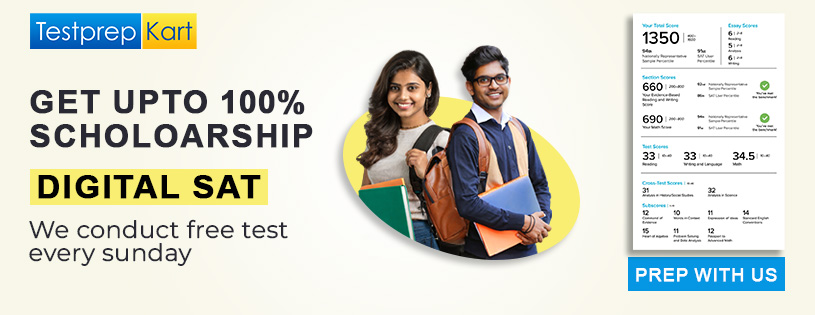
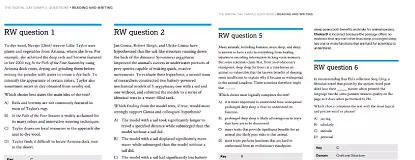
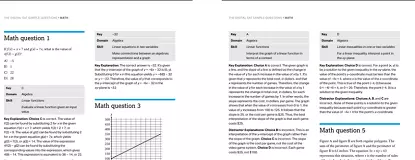
.webp)

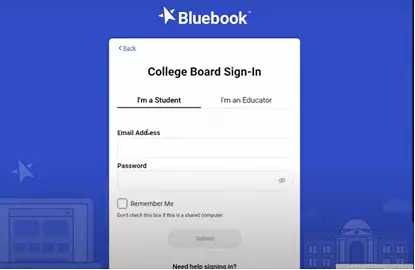
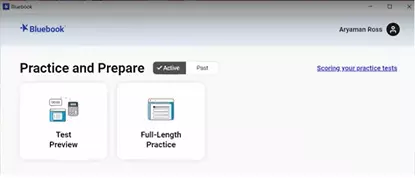



Leave a Reply